Nearshoring, Far-shoring, Reshoring – What is your best offshoring option?
Outsourcing manufacturing is a key decision for many companies. A value chain review identifies some production processes with expensive equipment not utilized sufficiently for their own products. As these processes are required to make the products, the company needs to decide how to handle this process, either outsourcing or finding external customers for these processes to better utilize the equipment. Some specialized suppliers will offer the same processing for lower costs as it may be difficult to find other customers, and many companies opt to outsource the decision. In some cases, such as a startup during scale-up or for other strategic reasons, a company may decide to outsource the complete production.
Once the outsourcing has been decided or reconfirmed, the question of the external manufacturing location must be decided. Moving your existing production to a nearshore (Adam, 2020) or far-shore location (Colamatteo et al., 2021), or reshoring (Bals et al., 2016) from a far-shore location to a nearshore location or back to your own area, or even to insource to your company is a complex business undertaking. As there are many issues to be considered, an approach for making the outsourcing and location decision is presented.
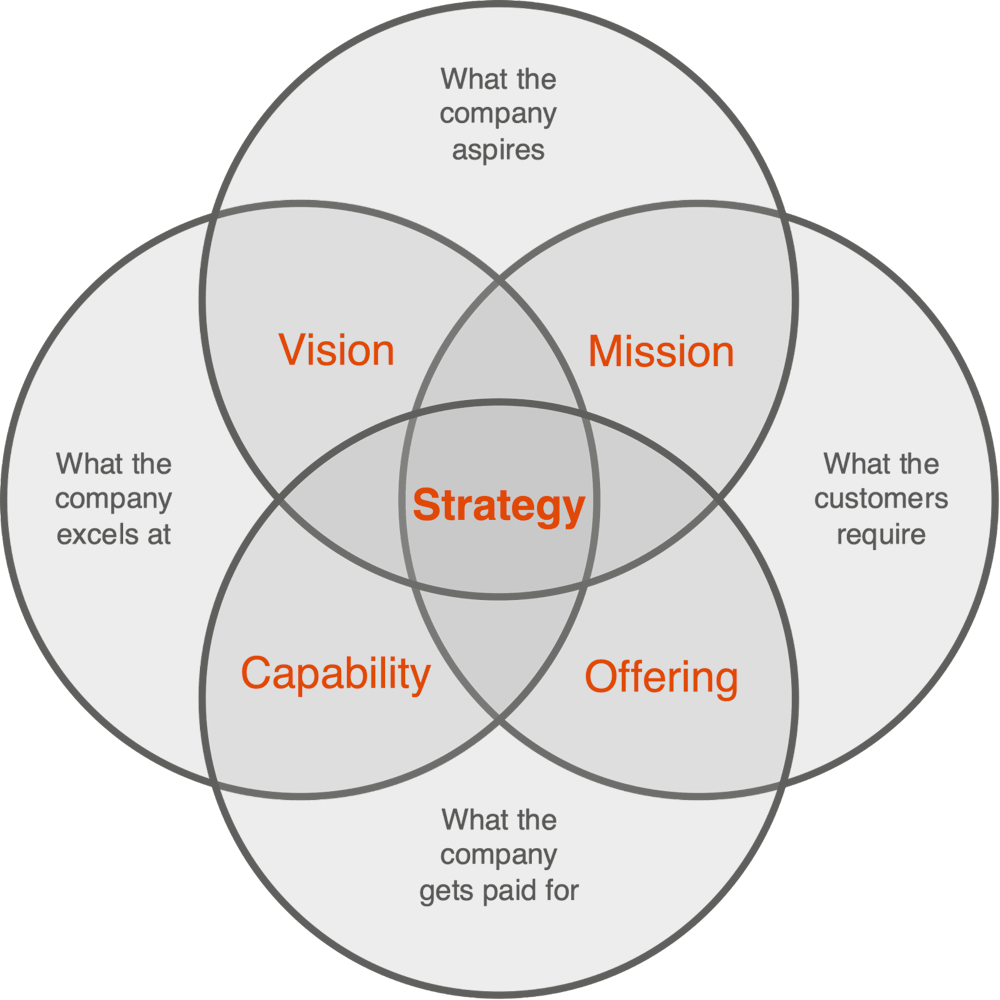
Figure 1: Strategy (Source Becker 2022)
Strategic Decision Framework for Outsourcing
Outsourcing is a strategic decision (Power et al., 2004), and the decision cannot be successfully taken without a review of your company strategy. You need to align the strategy around the offerings, capabilities, vision, and mission. What do your customers require? Your product and service offerings describe what the company gets paid for. The vision defines what your company wants to achieve. From the aspirations, the mission is communicated to the market. You need to define the capabilities needed to produce the products or deliver the services. Your company needs to excel at these capabilities. The strategy is well-rounded if all the elements are aligned.
The capabilities of the company are:
your product and services,
your business and production processes needed to provide the product and services to the customers,
your equipment, that is needed for the processes,
your digital tools to manage the business and production processes.
The decision whether to reshore, nearshore or far-shore, can be divided into two main questions:
insource or outsource the process
define the location: local, regional or off-continent
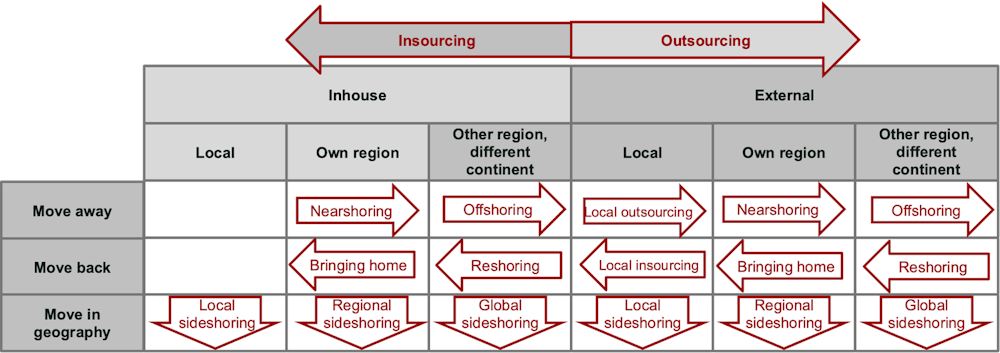
Figure 2: Relocation possibilities
Insource or outsource – here is the question
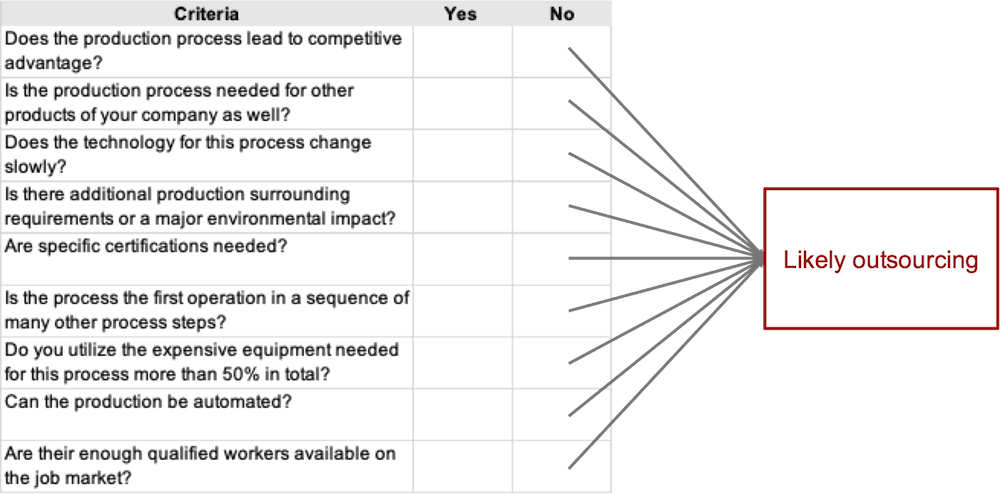
Figure 3: Decision framework for outsourcing
Several strategic questions guide the decision of whether a production process should be in-house or outsourced. These include:
Does the production process lead to a competitive advantage?
Is the production process needed for other products of your company as well?
Does the technology for this process change slowly?
Is there additional production surrounding requirements?
Is there a major environmental impact?
Are specific certifications needed?
Is the process not the first operation in a sequence of many other process steps?
Do you utilize the expensive equipment needed for this process more than 50% in total?
Can the production be automated?
Are there enough qualified workers available on the job market?
If the answer to all these questions is no, there is a clear indication that outsourcing is a good choice. The more questions you answer with no, the more likely outsourcing may be the right direction, but other reasons may be more critical. Let us review the questions and their impact in detail.
A competitive differentiation when component accuracy is key for product functionality and performance, is a clear indication for in-house production. e.g. if your company has a production process that places components, specifically on a PCB. The same is true, if the processes internally lead to better product quality or a significantly faster delivery time than the competition, in a performance metric that the customer cares about. Or in-house processes enable products to be more adapted to customer wishes - and customers pay a premium for the adaptation. If you transfer precious internal know-how to external partners, you may lose the differentiation.
If the production process is used internally for other products and the equipment has ample capacity, then it is prudent to produce in-house. The more specific the process is and the more specific the required equipment is, the more likely it is to review the make/buy options carefully. Any production equipment with less than 50% utilization may be a good selection for outsourcing discussions.
If the production process will change quickly, it may not make sense to invest in a soon-to-be outdated machine. Newer machines may have lower costs, but you need extra investments to stay on the production curve. In semiconductors, the structure width is constantly getting smaller, but the cost of the equipment is increasing a lot. If you want to use the process in-house, other companies may use the next generation of the equipment and achieve lower costs, while your company needs to utilize the existing equipment. If you have existing equipment, the question becomes: would external suppliers offer the same production operation cheaper than your own equipment operation?
Some production processes have a high environmental impact. They need special and expensive waste treatment for the byproducts of the processes, or additional equipment such as extra ventilation. The whole production may need a cleanroom to avoid quality problems, which may end up costing more than the production equipment. Understanding the additional impact of these factors will help you to evaluate whether a process should be in-house or not.
Legal or regulatory requirements will lead to some process complications. If you need a special permit for laser production equipment or the treatment of certain chemicals after use, there may be extra costs. Also, special know-how and trained people, e.g., for high voltage assembly, may lead to extra production requirements that cannot be covered internally.
If the production technology is used at the beginning of the production process, it is often easier to outsource than processes at the end of the production process. Especially at the beginning of the production process, it may also be easier to buy a processed component than to buy the material and provide it to a manufacturing service provider. If you have already added a lot of value to a product internally and then need to subcontract a process, the cost for the product is already high and inventory costs tend to be high. The later the process to outsource is in the sequence of the processes, the more logical it is to keep the process in your own four walls. Developing the process from the viewpoint of the customer and extending in direction of the raw material, reduces overall complexity in your supply chain. Producing printed circuit boards can be outsourced easily if the value of the PCB is very low compared to the overall product cost, as the PCB tends to be at the beginning of the assembly.
If you do not have enough production work to utilize expensive equipment, then it may be wise to find a capable supplier instead of investing in expensive machinery and building the capability internally. Producing your own application-specific chips in low volume does not usually make a lot of sense, since this requires a multi-million investment. You may want to design the chip and use a fab for production for low volumes, as a lot of fabs offer the production of chips to outside companies.
The availability of workers may be a deciding factor. If a company is in a region with low unemployment rates, it may be difficult to find enough workers for your production. If you need a lot of manual labor, a shortage of skilled workers can force your company to move the production from your factory to a production service company. Another reason for outsourcing may be that you cannot flex the production quickly enough to align demand and supply. Other countries may have less strict rules for hiring and firing or a more mobile workforce.
If the production process can be automated, that may allow you to produce locally instead of outsourcing the process. Keep in mind that a completely automated process can run at any place in the world. The more manual labor can be replaced with automation, the more likely it can move abroad. Printed circuit board (PCB) assembly requires a lot of equipment, but also many operators. Due to the high automation of the machines, you can produce high-quality products anywhere in the world. Lower infrastructure and labor costs will still provide significant cost savings for companies abroad. As most of the components are produced in Asia and PCBs can be produced in China for lower costs, lower material, infrastructure and labor costs make outsourcing of PCB assembly likely.
These questions are used as a recommendation. Use them as a first guideline to identify, whether the processes are candidates for outsourcing and what your specific circumstances are. If you have limited financial resources for all the production equipment, then it may be wise to review all production processes and identify where the outsourcing makes most sense instead of looking at replacing certain equipment and trying to outsource any process. A structured review will lead to a better decision than many ad-hoc decisions.
Deciding the Right Location for Outsourcing
Once the decision for outsourcing has been agreed upon, the question of the right location must be answered. The complexity of the outsourcing depends on the distance. Local outsourcing is easier to manage than far away locations, although the latter most likely have the highest cost advantage.
The decision for the location is a multi-objective optimization. Time, costs, flexibility and quality are the major drivers of the selection. Although costs are the main reason to offshore, some decisions are not completely cost-based. While the minimum wage in China is $162–$358 per month, monthly wages in India are in the range of $66 to $202 (27 Eye-Opening Outsourcing Statistics (2022 Update), n.d.). Despite the cost difference, more production has moved to China than to India.
A key filter criterion is the availability of service providers, skilled workers and infrastructure. Service providers are needed to run and manage the production. If no service providers exist in the selected location, the company can decide to develop a service partner in the region. This comes with high risk and additional costs.
Moving production to a tight job market does not make sense. Moving production to China gives access to an eager worker environment. Migrant workers will be available in many parts of China and can be used to flex production quickly. Apple can hire thousands of workers to build the new generations of phones ahead of the launch.
At the same time, production requires the transport of people, materials and products to and from the factory. In China, migrant workers tend to have a sleeping quarter on-site at the production plant, reducing the need for transport. The Chinese government has invested a lot of money into highways, trains, ports and airports, providing a lot of infrastructure for companies. At the same time, energy and communications connections are available in the key production locations. Other countries struggle with providing the infrastructure needed for advanced production.
One key blocker for far-away locations is reaction speed. Changing demands and requirements will give preference to local outsourcing or nearshoring. A built-to-order part cannot be produced offshore and transported at low costs to a faraway market. With the limited availability of international air travel from China, fast air delivery for many products was not possible in the past few years. This has forced many companies to review the production location and consider reshoring. Like variant flexibility, volume flexibility may be a good indicator for reshoring. If the volume of production changes very quickly and unexpectedly, only sites with short transportation times are viable. At the same time, different time zones between your company and the outsourcing partner inhibit fast and effective communication and will lead to many delays.
Some of the reasons for country selection are industrial and work attitude. Different countries value different disciplines. A company with a lot of production experience has workers with different attitudes and this is reflected in society as well. When the iron curtain fell in Europe, Bohemia, as an old industrial powerhouse, was a fast target for production activities from high labor-cost countries in Europe. Also, the quality attitude is a key element for deciding on a production location. Places with low attrition fare better than China, where migrant workers will change quickly to higher-paying jobs. This reduces skill building and organizational learning, both key factors for producing consistent quality.
The stability of products is another reason for near- vs far-shoring. If the product is not mature or has quality or ramp-up problems, then it is easier to solve the problems in-house or locally than in far destinations. Implementing an engineering change order is more difficult if production in a faraway outsourced location is concerned. This is because the communication and coordination efforts should increase and there is a lot of delays until the buffer inventory after the outsourcing is completely replaced with the new version. Far-shoring leads to more complications in problem-solving and thus to delays.
There are several factors influencing both cost and time. far-shoring will have a higher transport cost and will require more transport time. More replenishment time instead of nearly instant availability from own production requires higher inventory, so there is extra investment needed for creating the extra buffer. Communication costs increase and it takes more time to communicate, especially when a translation is required, or when different cultural understanding is encountered. Import taxes will also add a waiting time at customs, additional delays that lead to more inventory. Once a product is outsourced, many contracts are not based on a yearly cost savings approach, keeping the original saving, and increasing pressure on other processes.
On the other hand, government subsidies will help to reduce costs at the new location or investments and industry policies, such as tax and import tax rules, may have an impact on the right location. German car producers manufacture most of their SUVs in the US since the US import tax for these is much higher than the taxes for regular cars.
Other factors include environmental and social conditions, transport bottlenecks or problems, such as port closures or missing drivers. At the same time, stakeholder push can also influence the decisions for certain actions.
Deciding for the right location is looking at the amount of transport cost that is set off against the cost savings and the allowable time to supply. If the labor cost differential is high, the transport distance can be high. If the products are big and require a lot of transport costs, then nearshoring may be a better option. There is no best recipe for deciding the options.
Do the Right Cost Calculation
The basic question for many companies is regarding far-shoring: How much transport costs will be covered by the labor cost differential? Or simply put: How many labor minutes are in a container? If the savings per total labor minutes are higher than the transport costs, then there are outsourcing possibilities.
Unfortunately, this approach is too simple. Many companies only compare a cost calculation of direct labor plus material and forget to see that the overheads are not changing. Companies need to compare the total cost before and after the change, not using overhead percentages. You need to view the costs of getting the material to the production site and then check if the material is cheaper at a different location. Then, the cost of running the production needs to be added. And then, what other costs need to be carried at your own company plus any profit and overhead for your supplier?
In the end, you need to also understand the impact on storage costs, as there is now additional buffer stock needed to cover the longer transport times. Typically, outsourcing will increase the inventory significantly. This may require extra investments as discussed above.
Add import taxes and normal taxes, and you get a completely different picture than the original calculation. Some countries have 8-hour workdays, but this includes breaks, while other countries do not include the break, which needs to be reviewed before you calculate the cost per effective production hour.
The manufacturing processes typically require a lot of expensive equipment. If the company does not have enough financial resources to invest or is hesitant to invest in all equipment, the question becomes if the equipment from a supplier can be used.
If you need very expensive equipment, but you do not require it for many production hours, owning the equipment is very expensive and will lead to an expensive product. Buying the use of the expensive equipment, i.e., outsourcing the production processes to another supplier who owns this type of equipment makes a lot of sense. Depending on the type of work and the requirements, the production processes can be outsourced far away or nearby.
You can offset the high production cost with a smaller less efficient production machine, which will increase the costs, but not as much as buying the most expensive machines and only using them a part of the time.
The total cost for outsourcing to each location can be calculated with an activity-based cost model only. It is recommended to define a relevant model. At the same time, one-time costs and running costs need to be understood to gain the right view of the transfer decision. This includes inventory investments to buffer for longer fulfillment times and cover higher risks, which are often overlooked.
Understand the Risks
Producing internally means many risks remain contained in the company. Whereas moving production to a service provider and to a different location increases the risks for the company.
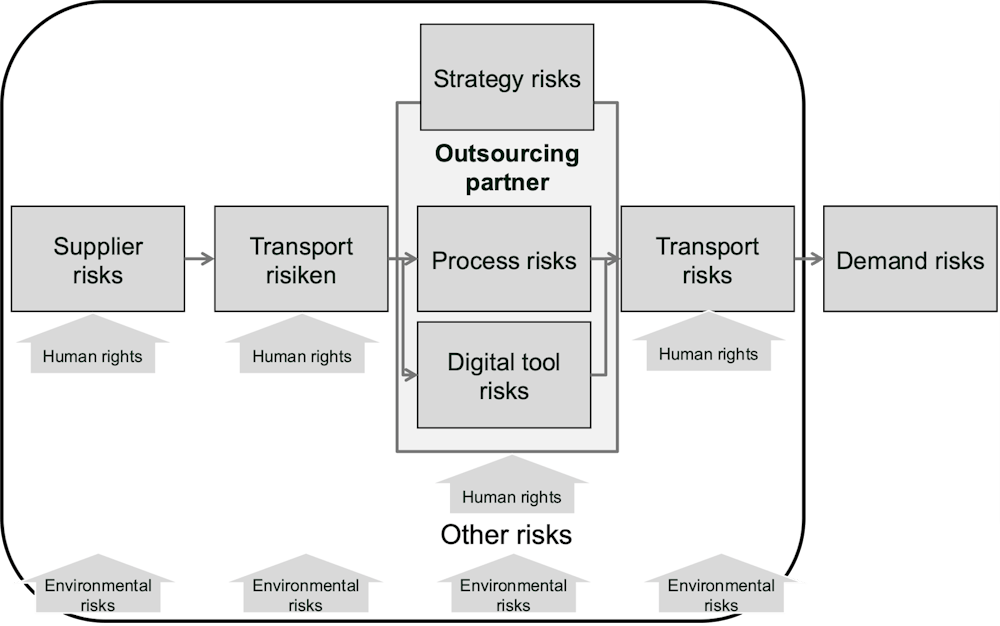
Figure 4: Supply chain risks for an external outsourcing partner
Instead of having the production in your own control, the internal supply chain risks move to the external partner. The most important risk for your outsourcing partner is strategic. If your supplier decides to stop running an outsourced business, competes with you with a similar product or even goes into insolvency, you need to change to a different supplier or insource the production as soon as possible.
Production process risks increase after a transfer, as there are fewer trained workers at the supplier and the knowledge about the processes is minimal. Any problem that was sorted out in the production previously, may resurface with no one knowing how to handle it. While more risks will appear more often, it will take more time to solve any risk-related problems.
There are a lot of risks associated with digital tool risks. This includes wrong master data or wrong data entry, or inappropriate software systems at the supplier. These risks can be avoided by completing detailed checks of the supplier data systems, which adds extra costs for your company, but these errors are hard to find. Engineering change orders are especially difficult to track across company borders, increasing the risks of wrongly manufactured products, which will lead to a supply chain disruption until the right product is back in stock.
The transport risks increase, both on the inbound as well as on the outbound side of your supplier. The farther the outsource location distance, the more transport steps are involved. There could be many different transfers between different carriers and transport types. At the same time, many issues may arise, such as port closures, transport blockage, traffic jams before unloading or missing transport capacities, just to name a few that happened recently. The number of risks increases significantly, and the effects can lead to much longer transport durations. This can only be mitigated by additional inventory, which increases warehouse costs and inventory investments.
With a transition to a far-shore outsourcing partner, many companies also transfer supplies to other regional partners. New partners lead to more risks. Apple has learned with the move of the iPhone production from China to India the hard way: The new Indian supplier for the housing production was far less reliable and a lot of housing had to be scrapped due to low quality, leading to an unplanned bottleneck in their supply chain. While additional changes in suppliers reduce material costs and transport times, the supply risks increase.
With the heightened awareness of corporate social responsibility, human rights risks and environmental risks will become a bigger focus. The supply chain due diligence needs to cover a review of these risks as well.
With outsourcing and especially with far-shoring, the risks increase significantly. It is well worth reviewing the possible risks before a transfer to get a complete understanding of the risks involved.
A structured risk assessment is a key element in the outsourcing and location determination discussion. Use the suggested topics to review, whether all risks have been identified and included in your situation.
Evaluate Pros and Cons
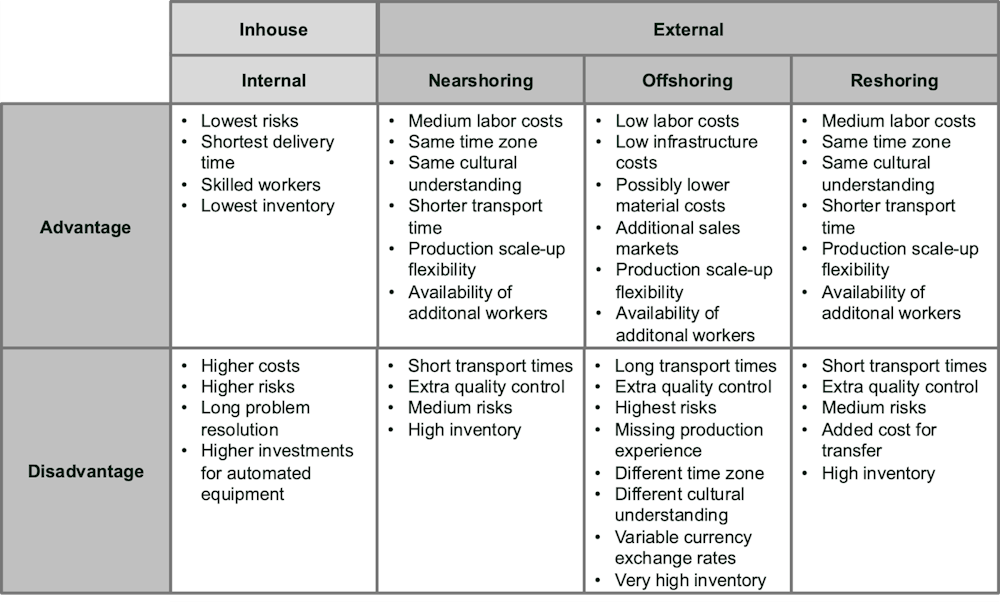
Figure 5: Advantages and disadvantages of different outsourcing options
The figure summarizes the advantages and disadvantages of the different outsourcing options. The key elements of the decisions focus on cost reduction versus the supply risk including possible quality risks. The supply risks can be buffered in inventory, which will increase warehouse costs and require a significant investment. At the same time, offshoring will reduce the reaction speed, as changes will take longer to implement so the right product will arrive later at the warehouse, delaying supply significantly. Solving quality problems may take longer times and will affect more products, so rework costs typically increase.
For many companies, the delays in communicating in far-shoring situations because of the different time zones are difficult to manage. There is a time difference of roughly 12 hours between the USA and China, so there is little communication overlap unless people start very early or work very late. Communication sent from the US to China will only be answered the following day, which delays problem resolutions as interaction is difficult to achieve and organize on short notice.
Cultural differences and language difficulties create extra barriers between the partners. While technical terms will be sorted out quickly, differences in decision-making and understanding will make a lot of communication much more difficult.
Many advantages of nearshoring deal with better communication. Typically, the same region has much less time difference, allowing for more overlap between the partners and faster conflict resolution. The number of transport risks is reduced, especially if the nearshoring location is in the same free trade zone, customs cost and time delays will disappear.
Making the Right Decision
Selecting the right decision in an outsourcing decision has become more difficult. The pandemic showed the limitation of past outsourcing projects and highlighted many risks. The heightened political tensions between China and the US and the war in Ukraine have raised many more questions on political stability as a risk factor to be considered in the supply chain.
Many companies are now reviewing different options, whether to extend outsourcing to nearshore or far-shore partners or to reshore far-shored business. The decision should not be taken ad-hoc and lightly. The key discussion needs to happen on a strategic level first, if outsourcing makes sense for any of the processes.
Once any process is selected as a candidate for outsourcing, the decision needs to be made, about where the best outsourcing location for each process is, either locally, regionally or globally. When checking the actual locations for each process and a deviation from the optimal location is identified, the necessity for change needs to be evaluated. If the change makes sense, the company needs to implement a project to relocate; depending on the situation, a far-shoring, nearshoring or reshoring transfer needs to be performed.
Bibliography
27 Eye-Opening Outsourcing Statistics (2022 Update). (n.d.). Retrieved November 17, 2022, from https://capitalcounselor.com/outsourcing-statistics/
Adam, J. (2020, August 26). Nearshore Outsourcing—The State Of The Market In 2020. https://kruschecompany.com/nearshore-outsourcing/
Bals, L., Kirchoff, J. F., & Foerstl, K. (2016). Exploring the reshoring and insourcing decision making process: Toward an agenda for future research. Operations Management Research, 9(3), 102–116. https://doi.org/10.1007/s12063-016-0113-0
Colamatteo, A., Cassia, F., & Sansone, M. (2021). Near-shoring versus far-shoring: Effects on customer perceived quality and purchase intention. The TQM Journal, 34(5), 1416–1431. https://doi.org/10.1108/TQM-05-2021-0132
Power, M., Bonifazi, C., & Desouza, K. C. (2004). The ten outsourcing traps to avoid. Journal of Business Strategy, 25(2), 37–42. https://doi.org/10.1108/02756660410525399